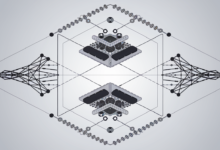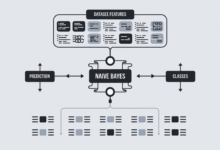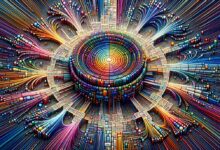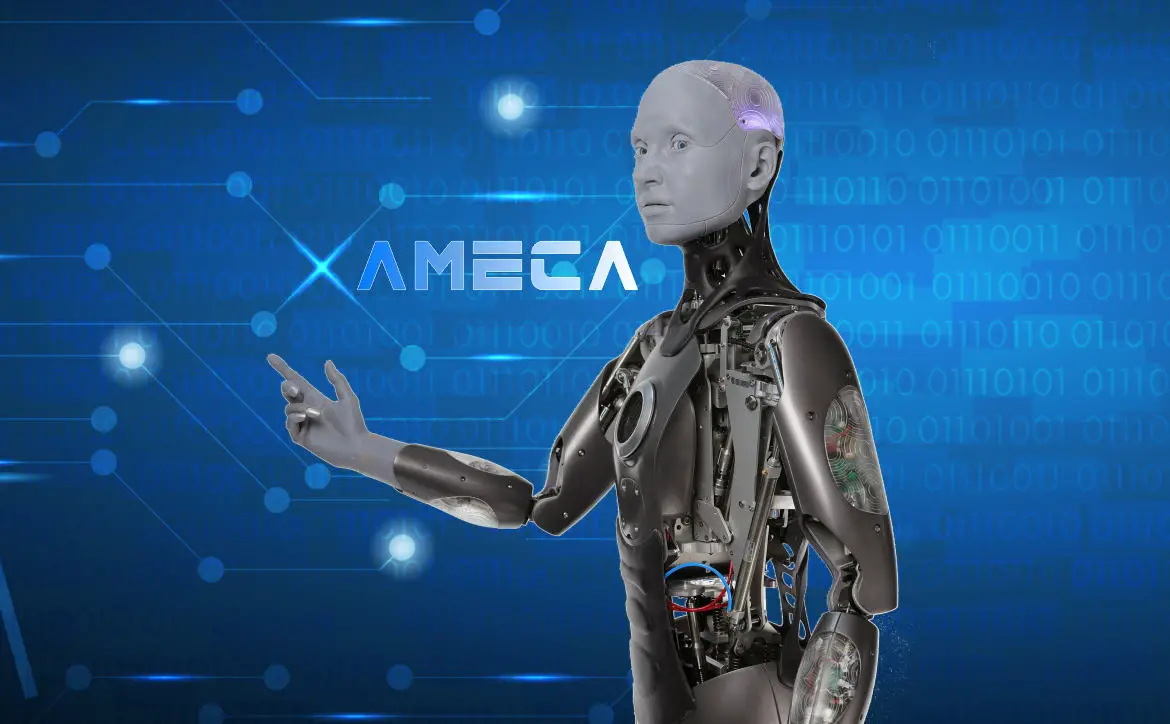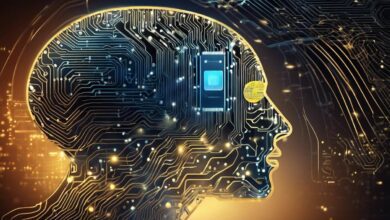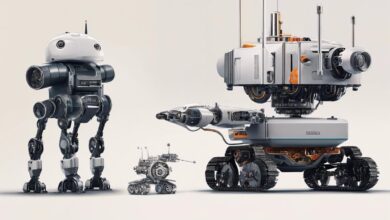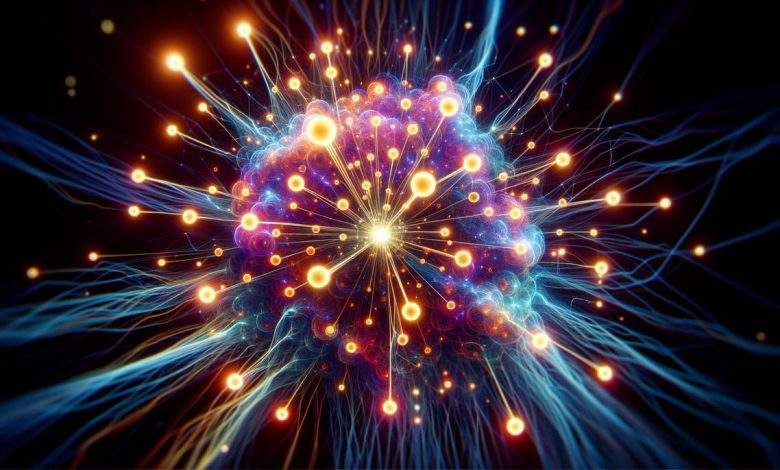
Understanding Deep Learning
Deep learning, a subset of machine learning, leverages neural networks to recognize patterns from unstructured data. Neural networks are algorithms modeled loosely after the human brain's architecture, designed to recognize patterns through layers of processing units called neurons.
What sets deep learning apart is the number of layers through which the data is transformed. Each layer provides a different interpretation of the input data, aggregating the complexity of recognition as you examine deeper.
Neural networks consist of input, hidden, and output layers. The input layer receives raw data, the hidden layers perform calculations to interpret that data, and the output layer delivers the final prediction. Each neuron links to many others, signaling via nodes that connect as a vast network.
In traditional machine learning, features must typically be labeled manually. In contrast, deep learning algorithms try to learn those features without specific direction. Each node assigns a weight to its incoming data, determining how much influence it should have on the next layer. By the output layer, the network has decided what the input represents more autonomously than machine learning would allow.
Deep learning's ability to process intricate data structures makes it invaluable for tasks demanding extensive recognition capabilities, such as:
- Speech recognition
- Language translation
- Image classification
These tasks, often encumbered by noise and ambiguity when tackled by traditional algorithms, benefit from deep learning's structure, which turns each layer of nodes into a focused strainer for useful information.
Industry applications of deep learning are vast, touching on sectors from automatic language translation services to facial recognition systems and enhancing medical diagnoses. By capturing intricate patterns too subtle for a human or classical program to notice quickly, it empowers systems to augment both speed and accuracy.
Deep learning requires significant computational power. As networks grow deeper, the algorithms need to compute more complex feature interactions, increasing the demand for powerful hardware.
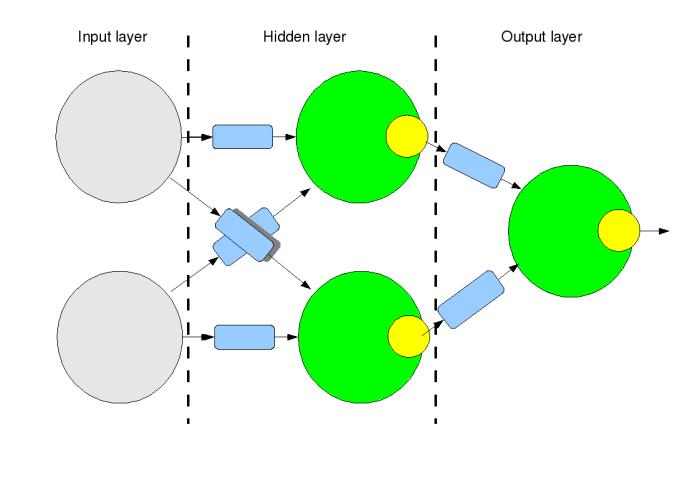
Key Technologies and Algorithms
Convolutional Neural Networks (CNNs) are renowned for handling image data. By emulating the human visual system, CNNs use filtering stages to process pixel data and identify spatial hierarchies in images. These filters tune themselves during training, picking up features like edges, textures, and patterns which are invaluable for image and video recognition, as well as medical image analysis.
Recurrent Neural Networks (RNNs) excel at processing sequential data. By possessing internal memory, RNNs can retain information in 'hidden' layers, helping them understand context and sequence in text or speech. This makes RNNs suited for language translation, speech recognition, and generating text that mimics human writing. RNNs face challenges with longer sequences due to issues like vanishing gradient, which have been mitigated by variants such as Long Short-Term Memory (LSTM) networks and Gated Recurrent Units (GRUs).
Reinforcement Learning (RL) teaches machines how to make a sequence of decisions by interacting with an environment. The goal of an RL agent is to achieve maximum cumulative reward, making it useful in complex decision-making systems such as robotics for autonomous navigation, real-time strategy game AI, and resource management. The application of RL has been bolstered by deep learning, where agents learn from large quantities of data to refine their strategies.
Effectively employing these advanced deep learning techniques often requires careful tuning and considerable computational resources. However, improvements in processor and GPU technologies continue to mitigate these challenges, making these powerful tools more accessible across various industries. Through innovative designs and the integration of multiple neural network models, emerging applications for deep learning technologies seem boundless, paving the way for new levels of efficiency and automation.
Implementing Deep Learning Models
Implementing deep learning models effectively involves selecting the right frameworks and libraries, such as TensorFlow and PyTorch. TensorFlow, developed by Google, is known for its flexible ecosystem of tools and libraries, supporting both research and production. It can scale from small setups to massive deployments within consistent APIs, making it popular for building and deploying machine learning applications.
PyTorch, developed by Facebook, shines in academic and research sectors due to its simplicity and dynamic computational graph. This allows for intuitive modifications to the graphs during runtime, beneficial during experimental stages of model development. PyTorch also provides extensive support for customizations and deep learning experimentation.
The choice between these two depends on specific project needs. TensorFlow is generally favored for large-scale deployments and mobile applications, while PyTorch offers advantages in rapid prototyping and iterations.
Data preparation is a fundamental prelude to successful model development. This involves collecting large datasets, followed by cleaning, validating, and partitioning the data to ensure it is suitable for training robust models without biases or errors. Practices such as normalization, tokenization for text data, and encoding categorical variables play crucial roles in preparing the input data.
Model tuning involves adjusting and optimizing model parameters to improve performance and avoid overfitting or underfitting. Techniques like grid search or random search are commonly applied to explore the best parameters. Modern deep learning includes techniques like dropout and batch normalization to enhance model sturdiness and generalization on unseen data.
Monitoring the model's performance through strategic placement of checkpoints and early stopping during training can save resources and prevent unnecessary computational expense. Board tools like TensorBoard provide developers transparent glimpses into the training progress, helping to optimize various aspects of the training runs.
With advancements in available tools and technologies, along with proper methodology for data preparation and parameter tuning, deep learning models pave the way toward realizing new dimensions in artificial intelligence applications.
Challenges and Solutions in Deep Learning
While deep learning has unlocked unprecedented advancements, working with these models brings notable challenges. Chief among them are overfitting, underfitting, and the reliance on vast volumes of training data. Addressing these challenges is paramount for optimizing deep learning models and ensuring they perform predictably in real-world situations.
Overfitting occurs when a model learns not just useful trends from the training data but also the noise or irrelevant fluctuations. Such models may exhibit high accuracy on their training data but perform poorly on new, unseen data. To mitigate this, techniques like regularization are deployed, adding a penalty on the magnitude of parameters within the model, limiting its complexity. Regularization techniques such as L1 and L2 constrain the model to dissuade learning overly intricate patterns that do not generalize well.
Another technique to combat overfitting is dropout. Randomly selected neurons are ignored during training, preventing the network from becoming too dependent on any individual neuron and encouraging a more robust and distributed internal representation. Dropout forces the neural network to learn multiple independent representations of the same data points, enhancing its generalization abilities.
Underfitting happens when a model is too simple to capture the underlying trend of the data, often due to an overly conservative architecture or insufficient training. This can be rectified by increasing model complexity or training for more epochs, giving the model more opportunity to learn deeper insights. Adjustments may also be needed in the learning rate to ensure the model does not miss significant trends.
Regarding the requirement for large amounts of training data, solutions like data augmentation and transfer learning come to prominence. Data augmentation artificially expands the training set by creating modified versions of data points, such as rotating images or altering colors. This expands the dataset and imbues the model with robustness to variations in input data.
Transfer learning repurposes a model developed for one task as the starting point for a model on a second task. It is valuable when there is a large dataset in one domain and a smaller one in another. By leveraging the existing weights and architecture as a base model, adjustments can be made based on the smaller dataset, saving computational resources and accelerating training.
By employing these strategies, deep learning practitioners can skillfully handle typical challenges, customizing their models to achieve efficiency and accuracy in various applications. Whether through regularization techniques, data augmentation, or leveraging learned features via transfer learning, deep learning offers various tools to address its inherent challenges, promoting more reliable and sturdy AI systems.
Future Trends and Applications
Emerging technologies in deep learning continue to push boundaries, and one of the most exciting developments is Generative Adversarial Networks (GANs). GANs are a class of AI algorithms used in unsupervised machine learning, implemented by a system of two neural networks contesting with each other in a zero-sum game framework. This setup enables the generation of realistic synthetic data, which has applications across various fields.
In the healthcare sector, GANs show promise in creating synthetic medical images for training purposes. This helps overcome privacy issues and the rarity of certain medical conditions, which often limit the amount of training data available. By generating high-quality artificial data, researchers and medical professionals can simulate a broader range of scenarios for more effective diagnostic tool development and medical training.
The automotive industry is on the verge of transformation, with deep learning leading advancements in autonomous driving. Vehicles equipped with sensors and cameras generate vast quantities of data. Deep learning algorithms can process and analyze this data, improving decision-making for self-driving cars. Capabilities such as real-time object detection, motion prediction, and complex scene interpretation are being enhanced by deep learning models, paving the way for safer and more efficient automated transportation systems.
AI ethics emerges as a critical conversation, especially as technologies like deep learning become central to more human-centric applications. The development of ethical AI involves creating systems that make decisions in ways that are fair, transparent, and accountable. Guidelines and frameworks aimed at governing AI's use in sensitive areas are anticipated to evolve in tandem with technological advancements, ensuring beneficial implementations while minimizing social risks.
Deep learning also opens potential new horizons in environmental conservation, with algorithms processing data from various sources to monitor deforestation, wildlife migration, and climate changes more effectively. These tools can predict future environmental shifts, providing critical data that can inform global strategies for sustainability.
As we look toward a future increasingly guided by artificial intelligence, the intersection of cutting-edge technology with ethical consideration will be paramount to responsibly harness deep learning's full potential. This marriage of advancement and ethics promises vast enhancements across multiple sectors and assures that the benefits of AI innovations are enjoyed broadly, contributing positively to society globally.

Writio: Your AI content writer creating quality articles with ease. This page was written by Writio.
- LeCun Y, Bengio Y, Hinton G. Deep learning. Nature. 2015;521(7553):436-444.
- Goodfellow I, Pouget-Abadie J, Mirza M, et al. Generative adversarial nets. In: Advances in Neural Information Processing Systems. 2014:2672-2680.
- Litjens G, Kooi T, Bejnordi BE, et al. A survey on deep learning in medical image analysis. Med Image Anal. 2017;42:60-88.
- Grigorescu S, Trasnea B, Cocias T, Macesanu G. A survey of deep learning techniques for autonomous driving. J Field Robot. 2020;37(3):362-386.
- Jobin A, Ienca M, Vayena E. The global landscape of AI ethics guidelines. Nat Mach Intell. 2019;1(9):389-399.
